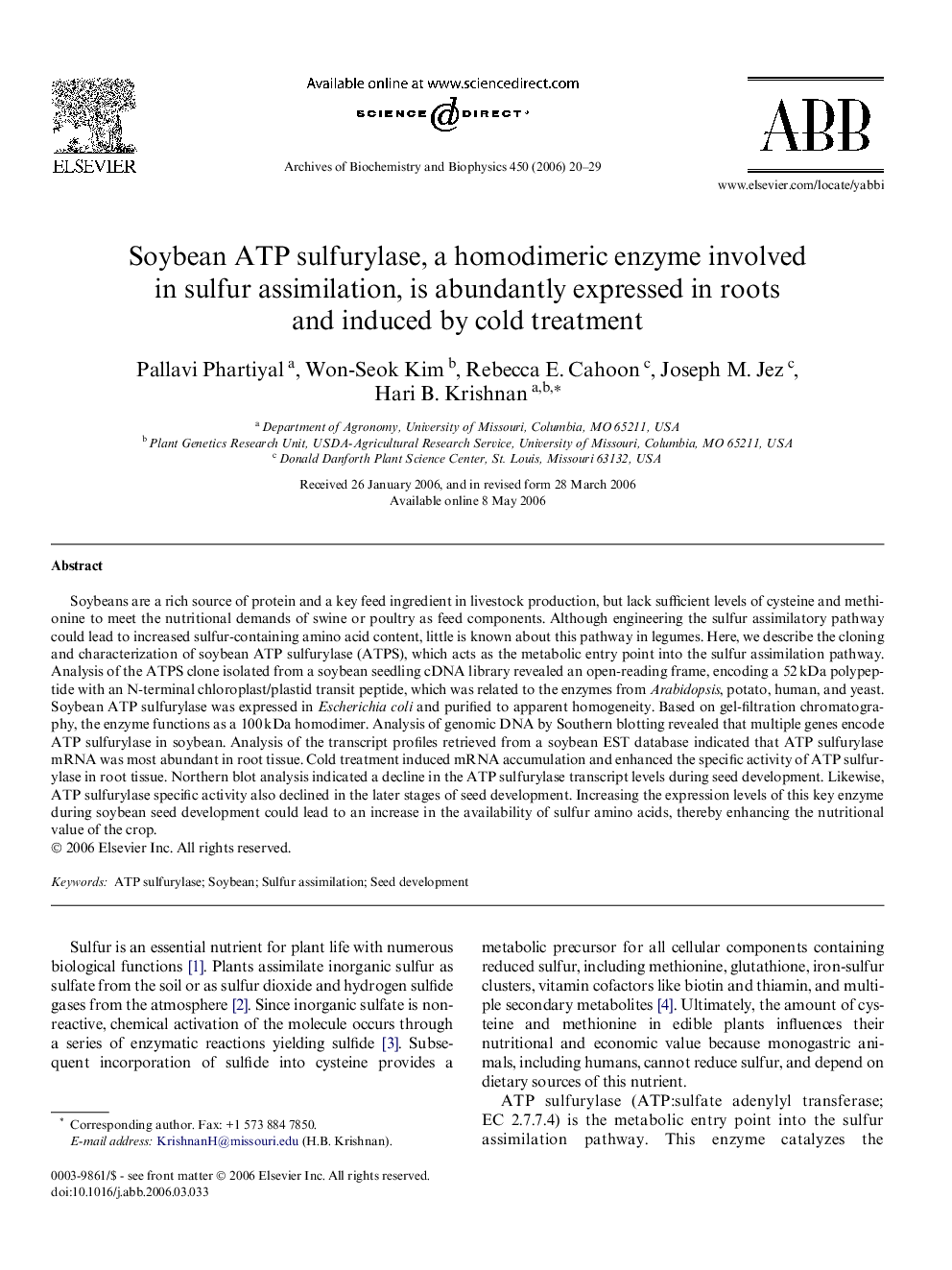| کد مقاله | کد نشریه | سال انتشار | مقاله انگلیسی | نسخه تمام متن |
|---|---|---|---|---|
| 1927552 | 1536526 | 2006 | 10 صفحه PDF | دانلود رایگان |

Soybeans are a rich source of protein and a key feed ingredient in livestock production, but lack sufficient levels of cysteine and methionine to meet the nutritional demands of swine or poultry as feed components. Although engineering the sulfur assimilatory pathway could lead to increased sulfur-containing amino acid content, little is known about this pathway in legumes. Here, we describe the cloning and characterization of soybean ATP sulfurylase (ATPS), which acts as the metabolic entry point into the sulfur assimilation pathway. Analysis of the ATPS clone isolated from a soybean seedling cDNA library revealed an open-reading frame, encoding a 52 kDa polypeptide with an N-terminal chloroplast/plastid transit peptide, which was related to the enzymes from Arabidopsis, potato, human, and yeast. Soybean ATP sulfurylase was expressed in Escherichia coli and purified to apparent homogeneity. Based on gel-filtration chromatography, the enzyme functions as a 100 kDa homodimer. Analysis of genomic DNA by Southern blotting revealed that multiple genes encode ATP sulfurylase in soybean. Analysis of the transcript profiles retrieved from a soybean EST database indicated that ATP sulfurylase mRNA was most abundant in root tissue. Cold treatment induced mRNA accumulation and enhanced the specific activity of ATP sulfurylase in root tissue. Northern blot analysis indicated a decline in the ATP sulfurylase transcript levels during seed development. Likewise, ATP sulfurylase specific activity also declined in the later stages of seed development. Increasing the expression levels of this key enzyme during soybean seed development could lead to an increase in the availability of sulfur amino acids, thereby enhancing the nutritional value of the crop.
Journal: Archives of Biochemistry and Biophysics - Volume 450, Issue 1, 1 June 2006, Pages 20–29